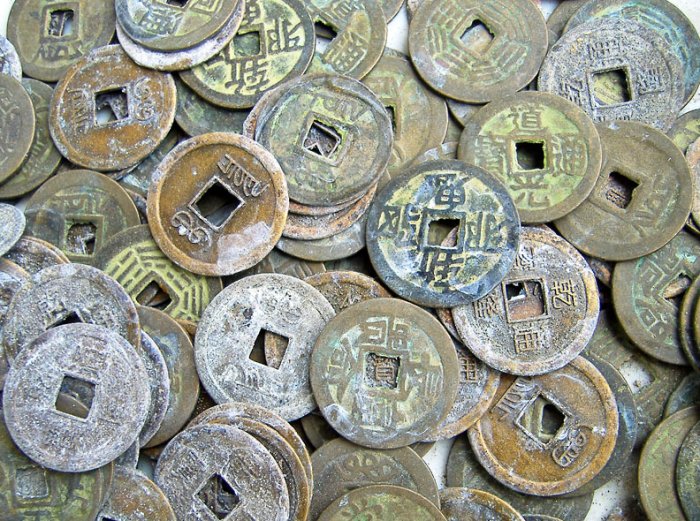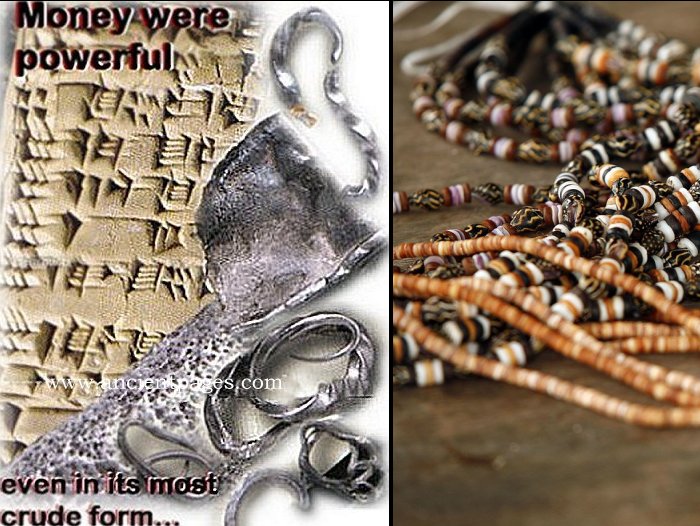Our Lives Have Always Been Manipulated By Money – Part 1
A. Sutherland - AncientPages.com - For 4500 years, human life was controlled and even manipulated by money. Ever since ancient times, money has played a central role in people's lives, regardless of whether payment has been rare shells, worthless iron coins, small springs, or stamped precious metal pieces.
Chinese bronze coins. Image credit: Plismo - CC BY-SA 3.0
In Greece, for example, prehistoric falsifiers covered cheap copper with a thin layer of gold and tin they used to cover with the thin layer of silver.
We go back 4500 years and find that silver rods were the world's first money. They were introduced in Mesopotamia to smooth the progress of trade. The origin of money is hidden in the far distant past, but for the first time, money was mentioned in writings in Mesopotamia (today: Iraq).
According to ancient cuneiform tablets, pure silver was the first standardized payment. They were shaped like rods cut off and weighed when a business was ready to be implemented.
The introduction of silver most probably took place for purely practical reasons. Trade was prevalent in the highly developed Mesopotamia, and natural objects were often heavy and unwieldy, so it was much easier to take small silver rods than oxen or cereal. According to historians, cuneiform tablets were invented for easier bookkeeping of the growing number of trade transactions.
For thousands of years, China has been using gold, silver, and even copper money, which were in circulation besides the well-known cowrie shells.
Even in those distant times, a very "elementary process of minting was in vogue; and the coins were known as the round money, bell-shaped money, and the knife-shaped money." (S.R. Wagel, "Chinese Currency And Banking")
During the early periods of China's history, the shells constituted the only medium of exchange.
About 3500 years ago, the Chinese began to use small shells as money. Shells were perfect money for the Chinese people. They were lightweight, durable, small, easy to carry, and impossible to falsify.
The extent of shell currency is currently unclear, but it was probably prevalent. As the Chinese writing system developed, it used the shell sign as the symbol for 'money.' Similarly, shells were included in characters, including such terms like "buy," "sell," and "barter."
The shells, very coveted by people living along the Indian Ocean until the 1900s, were used to pay for groceries, including food. On the other hand, the Chinese were not the only ones who paid with shells', which also suffered inflation like our modern currency.
For example, in remote regions of Uganda, a wife cost only two shells (!) in the 1700s. As a result of inflation, more than 1000 shells had to be paid to buy a wife in 1860.
People improved the roads to the sea, and many more shells came into circulation, and their value decreased. Coins of metal were known in ancient Egypt, though wealthy merchants dealing with foreign partners almost exclusively limited their use.
The most common payment among ordinary people was cereal. A monthly salary of around 200 kg was used in barter trade to obtain other goods.
Right: Papua New Guinea shell money. Image credit: Department of Foreign Affairs and Trade - SOLS0344- CC BY 2.0
Egyptians could put grain, receive or borrow some if necessary, while banks' goal was to stimulate trade, built up power, and a network of public cereal. Bank customers received a receipt for their deposits and loans and could take out or pay in other cereal banks. The receipts were also used as payment in trade.
To prevent fraud in the local bank branches, the central bank in Alexandria had copies of all service accounts.
Once upon a time, there was an Iron Age kingdom in western Asia Minor known as the Kingdom Of Lydia. Lydia was considered one of the wealthiest kingdoms of antiquity when it replaced the metal lumps with beautifully minted coins. The Lydian money was called the "Adam of coins" because it inspired later periods of coins in Europe and the Middle East. The Kingdom of Lydia was not more extensive than a city-state, but that seemingly insignificant kingdom left behind a legacy that would change history: coins.
There were already various forms of money in Egypt, China, and other great ancient kingdoms. Still, in Lydia, it was recognized the importance of a small and manageable payment for the first time.
To eliminate the great inconveniences of non-standardized money, banks and goldsmiths began to convert metal into standard coins, giving them specified shape, weight, and fineness. Circa 640 BC, the Lydian kings were the first to strike average weight and common size coins. They also marked them with their sigils to ensure the metal's authenticity. Additionally, they counted the coins!
Coins revolutionized trade because Lydian merchants no longer needed to devote their precious time weighing silver and gold pieces or exploring the metal's purity.
"Virtually all coinage in use today is the progeny" of what the Lydians initiated. (Porteous, "The Nature of Coinage")
Written by – A. Sutherland AncientPages.com Staff Writer
Copyright © AncientPages.com All rights reserved. This material may not be published, broadcast, rewritten or redistributed in whole or part without the express written permission of AncientPages.com
Expand for referencesReferences:
G. Davies, "History of Money"
S.R. Wagel, "Chinese Currency And Banking"
More From Ancient Pages
-
 Lady Of Drunkenness And How God Ra Wanted To Teach Humans A Lesson
Egyptian Mythology | Jun 20, 2019
Lady Of Drunkenness And How God Ra Wanted To Teach Humans A Lesson
Egyptian Mythology | Jun 20, 2019 -
 1,500-Year-Old Christian Reliquary Found In An Unknown Church In Irschen, Austria
Archaeology | Jun 26, 2024
1,500-Year-Old Christian Reliquary Found In An Unknown Church In Irschen, Austria
Archaeology | Jun 26, 2024 -
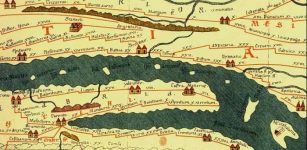 Tabula Peutingeriana: Huge Ancient Roman Map Created By Unknown Cartographer
Artifacts | Dec 14, 2018
Tabula Peutingeriana: Huge Ancient Roman Map Created By Unknown Cartographer
Artifacts | Dec 14, 2018 -
 Silver Needle Dismissed As Trash Was Part Of A Stunning Viking Treasure Found By Farmer On Gotland
Archaeology | Nov 17, 2020
Silver Needle Dismissed As Trash Was Part Of A Stunning Viking Treasure Found By Farmer On Gotland
Archaeology | Nov 17, 2020 -
 Tanana Valley, Alaska: Study On Ancient Hunter-Gatherer Sites Dating Back To 14,500 Years Ago
Archaeology | Mar 21, 2022
Tanana Valley, Alaska: Study On Ancient Hunter-Gatherer Sites Dating Back To 14,500 Years Ago
Archaeology | Mar 21, 2022 -
 On This Day In History: Explorer Of The New World Amerigo Vespucci Born – On Mar 9, 1451
News | Mar 9, 2017
On This Day In History: Explorer Of The New World Amerigo Vespucci Born – On Mar 9, 1451
News | Mar 9, 2017 -
 Unique Sword Casts New Light On Viking Voyages Across The North Sea
Archaeology | Jul 18, 2022
Unique Sword Casts New Light On Viking Voyages Across The North Sea
Archaeology | Jul 18, 2022 -
 Three Fun Paradoxes Created By Ancient Greek Philosophers To Puzzle Over
Featured Stories | Aug 28, 2024
Three Fun Paradoxes Created By Ancient Greek Philosophers To Puzzle Over
Featured Stories | Aug 28, 2024 -
 Unique Historical Discovery – Wreck Of Vasa’s Sister Ship Äpplet Found Off Swedish Coast!
Archaeology | Oct 25, 2022
Unique Historical Discovery – Wreck Of Vasa’s Sister Ship Äpplet Found Off Swedish Coast!
Archaeology | Oct 25, 2022 -
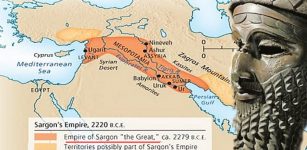 How Did Sargon Become The Most Powerful Ruler Of Mesopotamia?
Featured Stories | Apr 3, 2020
How Did Sargon Become The Most Powerful Ruler Of Mesopotamia?
Featured Stories | Apr 3, 2020 -
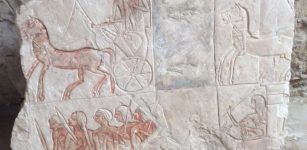 Unusual Scenes Painted On The Walls Inside Egyptian Tomb Of General Iwrkhy – Discovered
Archaeology | May 10, 2018
Unusual Scenes Painted On The Walls Inside Egyptian Tomb Of General Iwrkhy – Discovered
Archaeology | May 10, 2018 -
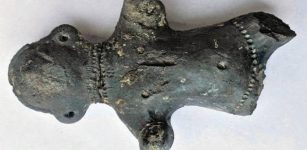 Evidence Of Sangam Age Settlement Unearthed At Nangur, Tamil Nadu
Archaeology | Jul 11, 2019
Evidence Of Sangam Age Settlement Unearthed At Nangur, Tamil Nadu
Archaeology | Jul 11, 2019 -
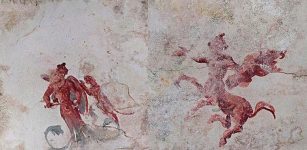 Sphinx Room Discovered At Emperor Nero’s Famed Domus Aurea (Golden House)
Archaeology | May 9, 2019
Sphinx Room Discovered At Emperor Nero’s Famed Domus Aurea (Golden House)
Archaeology | May 9, 2019 -
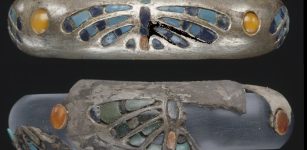 Mystery Of Egyptian Queen Hetepheres I’s Bracelets Solved!
Archaeology | Jun 2, 2023
Mystery Of Egyptian Queen Hetepheres I’s Bracelets Solved!
Archaeology | Jun 2, 2023 -
 Remarkably Well-Preserved 2,000-Year-Old ‘Tomb Of Cerberus’ With Amazing Frescoes Discovered In Italy
Archaeology | Oct 12, 2023
Remarkably Well-Preserved 2,000-Year-Old ‘Tomb Of Cerberus’ With Amazing Frescoes Discovered In Italy
Archaeology | Oct 12, 2023 -
 Horrible Ancient Massacre On The Island Of Chios Led To Greek Independence
Featured Stories | Jun 29, 2018
Horrible Ancient Massacre On The Island Of Chios Led To Greek Independence
Featured Stories | Jun 29, 2018 -
 Native American Tradition Of A Vision Quest – How To Enter The Spiritual World
Ancient Traditions And Customs | Apr 25, 2017
Native American Tradition Of A Vision Quest – How To Enter The Spiritual World
Ancient Traditions And Customs | Apr 25, 2017 -
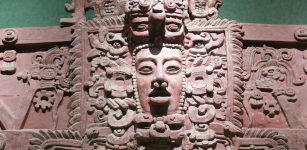 Fixing Archaeology’s Dating Problem – New Method Developed By Scientists
Archaeology | Sep 17, 2021
Fixing Archaeology’s Dating Problem – New Method Developed By Scientists
Archaeology | Sep 17, 2021 -
 On This Day In History: Tokugawa Shogunate Begins In Japan After Historical Battle – On Oct 21, 1600
News | Oct 21, 2016
On This Day In History: Tokugawa Shogunate Begins In Japan After Historical Battle – On Oct 21, 1600
News | Oct 21, 2016 -
 Has The Mystery Of Neanderthals’ Flower Burial At Shanidar Cave Been Solved?
Archaeology | Aug 31, 2023
Has The Mystery Of Neanderthals’ Flower Burial At Shanidar Cave Been Solved?
Archaeology | Aug 31, 2023

